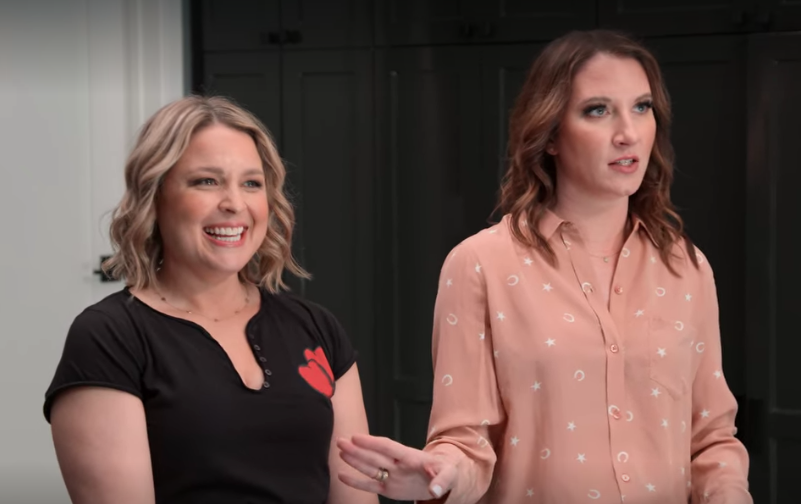THE QUEEN'S GAMBIT: I HAVE NOTES.
- Tahnee

- Nov 25, 2020
- 6 min read
Updated: Dec 19, 2020
No, Jolene’s speech doesn't absolve you of using the Magical Negro Trope.... No, it's nothing like Mad Men.... Yes, Anya Taylor-Joy has gigantic eyes.

I learned how to play chess once. I don’t remember why, I don’t remember who taught me, and I don’t remember a single thing I learned all those years ago. Even though my chess career was infinitesimal, I never stopped thinking that chess is hot. This might be because it felt so beyond my field of intellect, an endeavor reserved for educated high society only. Call me elitist, but that’s kind of sexy, no? Perhaps even more sexy than playing chess is watching and listening to people who really nerd out on it, who can wax poetic about its many, many intricacies and spout off random facts about its history.
Evidently, Scott Frank and Allan Scott, the co-creators of The Queen’s Gambit, agree with me, and so does almost everyone else alive. Gambit has now set a viewing record for Scripted Limited Series at Netflix, and the verdict is officially in...chess really is hot!
The Queen’s Gambit follows Beth Harmon (Anya Taylor-Joy), an orphaned chess prodigy who rises to international acclaim while battling addiction throughout the 50s and 60s. Have you seen The Queen’s Gambit? I’m going to assume you have (spoilers ahead). It’s composed of a lithe seven parts (although sometimes you will find yourself staring at a ceiling with Beth for a little too long, I'm not a huge fan of those imaginary chess pieces, sorry) and there’s an undetectable force that pulls you through the several hours.
Perhaps that force is Anya Taylor-Joy, who plays Beth Harmon from fifteen years old and onward. Taylor-Joy, who stars in this year’s Emma., plays Beth with an aloof poise that brings a feminized weaponry to every scene. I will not describe the size of Taylor-Joy’s eyes, because there is literally not one review out there that doesn’t illustrate their grandeur, but I will report on the power of her perfect manicures, which left me enviable of her swift and emotive hands, and longing for a day at the spa.
Beth is peculiar. She’s blunt and obsessive, a loner who finds it hard to connect to people without the buffers of chess or alcohol. It’s difficult to place where these attributes might come from; the trauma of losing her mom in a car crash (while she was in the car), her upbringing in a Catholic orphanage that plied her with tranquilizers prompting a fervent addiction, or if she is just a socially awkward genius, possibly on the autism spectrum (she’s never explicitly described as autistic, but often coded as such). It’s the aforementioned feminization of Beth that sets her character apart from other women in sports tales. She needn’t abandon femininity to prove herself as a confident (frequently arrogant) threat to the men around her. She’s not only a woman in a man’s world, but somewhat of a glamour puss, which adds to the subversive nature of her victories. Nobody in this world of tweed and coffee breath is expecting a woman, let alone a stylish one, to beat them. I also have a hunch that Beth’s love of fashion is a tool to endear her to us on a personal level, considering how impenetrable her austere demeanor can be at times. The ultra stylish ensembles of Miss Harmon are in the same vein as the get ups of Villanelle in Killing Eve. The sort of character detail that not only keeps our eyes glued, but helps us to regard these women as authorities. It alerts us to an aesthetic point of view and an awareness of their own gravitas. When a character exudes taste through their clothes, it tells us they have a social and aesthetic intelligence - we can assume they know something we don’t.
These ultra stylish aesthetics permeate the entire series. From the dark and ashen depths of the Methuen orphanage, to the living room of Beth’s Kentucky home, the series manages to create luscious worlds for Beth to play in. But sometimes this visual universe offers little more than sleek and swoony images. Because it’s set in the 60s, it’s been inevitably compared to my beloved Mad Men, another period drama set in the 60s. I’m gonna level with you, reader - I don’t see it. People have referred to The Queen’s Gambit’s visual universe as “creamy,” “dazzling” and “overly lush” - these aren’t words I’d use to describe the aesthetics of Mad Men (not that Mad Men’s production design isn’t exquisite). In Mad Men, the period is the medium and the message. It’s vital to the journey, and therefore, the aesthetics are disinterested in making the world look expensive. The Queen’s Gambit, on the other hand, utilizes the period as a sumptuous backdrop. Whereas Gambit takes the style of the 60s and highlights its most pleasing characteristics, Mad Men shows the good, the bad and the ugly without relying on those aesthetics. In other words, Mad Men feels lived in. It’s aware that the vogue of the 60s is lost on those who lived in it, because they were busy pining for the 40s and 50s. The Queen’s Gambit looks at the style of the period and imbues it with the fascination we hold today. Every detail is meant to be pretty, above all else. Mad Men’s design isn’t meant to make your mouth water, but to demonstrate a collective state of mind. The Queen’s Gambit attempts both, and the authenticity suffers for it.
Gambit succeeds more than it fails though, partly because the show takes many roads less traveled. I had steeled myself for Beth to have to contend with a series of devastatingly vicious set backs, but the show had other plans. Rather than position Alma Wheatley, Beth’s adoptive mother played by Marielle Heller (who has proven time and time again that there is literally nothing she can’t do), as some sort of money hungry stage mom, the series makes Alma and Beth amiable business partners (and drinking buddies as well). I guess I’ve been trained to believe that all adoptive parents are evil. Alas, Alma is different. Rather than hand Beth a romantic suitor for whom she tragically pines, the series presents several perfectly charming options who she fucks and/or friend zones instead. I found myself wondering what the hell was going on with Mr. Wheatley, a character whose storyline felt like it was meant for more but was scrapped last minute, only to find that he was just a benign douchebag. Furthermore, I was repeatedly proven wrong by Townes, whom I always suspected was up to some kind of sabotage. Maybe my expectations have been altered by the graphic dramas of the Ryan Murphy oeuvre, or maybe it’s because Townes and Beth share their first moment of sexual chemistry when she’s a mere fifteen years old, which makes my ick alarm go off. Nevertheless, he turns out to be decent, just a hot gay man who accidentally leads Beth on (come to think of it, the men in Gambit are all shockingly decent considering how normalized predatory behavior was in the 60s).
But for all of these interesting narrative choices, there is still one moment that drops the ball with a resounding thud, appropriately enough, in a racquetball room. Yes, I am talking about the scene in which Jolene, Beth’s only confidante from Methuen, offers her hard earned savings to send Beth to Russia to play Borgov for the world title. This moment tries to hide itself by giving Jolene a “I’m not your Magical Negro” speech after Beth calls Jolene her guardian angel. But the subsequent “fuck you” that Jolene spews at Beth (partly in jest and partly to teach her a lesson) doesn’t do nearly enough to undo the damaging and irritating trope bestowed on Jolene. The more I read about Gambit, the more surprised I grew at the dearth of attention paid to Jolene, played wonderfully by Moses Ingram, and this particular scene. “I’m not your guardian angel. I’m not here to save you,” Jolene says, but that is precisely what she’s made to do. Even more infuriatingly, the series had endless ways to get Beth to Moscow, and its attempt to tell us, “We’re not doing what you think we’re doing!” by giving Jolene that speech was insulting. That silly and tone deaf decision destroyed a lot of good will built up in the first six episodes of the series. We know Beth will win and pay Jolene back, but goddammit!
The Queen’s Gambit is good. It manages to make a game you play while sitting at a tiny table feel horny and daring and universal, and it does it with an ostensibly remote leading lady guiding us through. It’s about demons of many kinds, and addictions that aren’t indications of hedonism necessarily, but rather a resource for maintaining equilibrium. Beth is not only addicted to drugs and alcohol; she’s addicted to chess, which has afforded her a respite and a means of swagger. The show subtly hints that Benny, Beth’s weirdo cowboy nemesis turned mentor turned lover played by Thomas Brodie-Sangster, has a gambling addiction - a lucrative little vice to accompany his own chess habit. Alma is clearly a depressed alcoholic, and Beth’s biological mother was battling demons so strong that she took her own life in a deliberate car crash. The series is about making those demons less powerful by creating a supportive community...and looking chic while doing so.



I just stumbled upon this show by accident one night and I was hooked within the first ten minutes. Thanks for your insight into all the little details that I didn't really take the time to think about... It's fascinating to watch you dissect the world on the screen and to see it through your eyes:) Loved this show and loved your post on it! And yes, the fashion was fabulous!